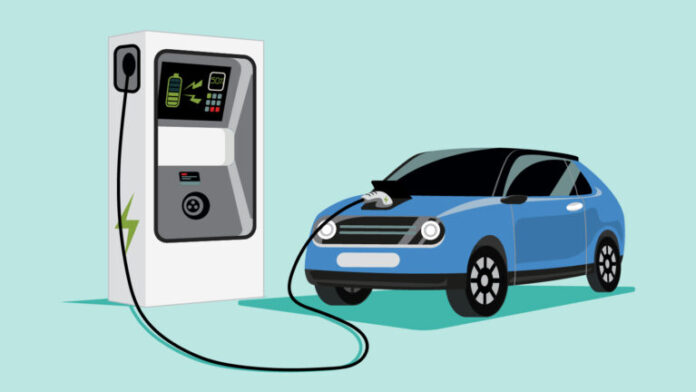THE EV DREAM IN ZAMBIA, A PIPEDREAM?
EV Batteries and automotive industry in Zambia…
By Correspondent
A bit of history and numbers would give context to the discourse on EV batteries and vehicle industry in Zambia.
In the 1970/80s, Zambia had a small automobile industry: LMA assembled FIAT and Peugeot cars in Livingstone, Rover Zambia assembled Land Rover in Ndola; Lusaka Engineering Company (Lenco) mounted bodies or pans on chassis to make buses and trucks in Lusaka + Dunlop moulded tyres in Ndola while ERZ conducted maintenance of engines at a more organized level. Today only Lenco is existing and operating, as Agro Fuel, and is still making quality trailers and tankers in Lusaka.
The automobile industry in Zambia was created primarily to support an ideological objective (self sufficiency), but collapsed due to economic reasons, principally economies of scale. LMA operated like a small team assembling a jigsaw. Complete cars came from Italy and France in boxes.
All items, including screws, mats and belts were imported. LMA just fastened everything and painted the car. The output was about 500 cars per year. A factory of such size can’t break even nor survive sustainably. LMA was a political project, not an engineering nor economic project.
In conceptualizing a new automotive industry for Zambia, let’s consider the economics, marketing and engineering to the effect that economies of scale matter, purchasing power is important and support industries make a difference. RSA, Morocco, Algeria and Tunisia make cars, sell cars and export cars. We can benchmark and work out a sustainable model.
As regards EV batteries, please note that there’s been more politics than science on the subject. Firstly, it’s important to contextualize the meaning of minerals for EV batteries. Two thirds of all cars are made in Asia and half are sold in China alone.
The major mineral for batteries is lithium, mostly in combinations with other minerals as lithium-cobalt, lithium-nickel, litium-manganese and lithium – gypsum (still under development).
It’s very important for people to understand that Zambia doesn’t have lithium. Zimbabwe mines a little lithium while our neighbors DRC and Namibia have some reserves of the mineral, but are still some years away from actual mining. The world largest producer of lithium is Australia (over 50%), followed by Chile, China and Argentina who jointly produce over 90% of all lithium used in the world.
The second mineral used in batteries is cobalt. Please note also that Zambia produces little or no cobalt and there’s no available geological information yet of any huge deposits of cobalt in Zambia. The mineral has been produced alongside copper in Luanshya, Nkana and Nchanga.
Today only KCM produces very little cobalt. Our annual output rarely got over 3,000 tonnes. DRC is producing over 100,000 tonnes of cobalt or 70% of global output.
The key producers of cobalt in DRC are Glencore, ERG and the Chinese. Please remember that Glencore had altercations with GRZ over Mopani while ERG was forced to close Chambishi Metals over a dispute with GRZ regarding import of concentrates from DRC.
It’s now interesting that GRZ is entertaining the thought that Glencore, ERG and the Chinese will opt to export their cobalt to Zambia to use in battery factory in Ndola.
This is probably a case of failing to pay attention to geopolitics and risk management in particular.
The next mineral to consider is nickel. Do we have nickel in Zambia? Here again the answer is ⅓ yes and ⅔ no.
The small yes is in regard to the $1.2 billion investment by FQM to mine nickel in Solwezi. The projected output after full development and ramp up is 30,000 tonnes of nickel contained in concentrate that will be exported.
Though this figure is very small, it will represent the largest nickel mine in Africa. There’s also a toy nickel mine near Mazabuka which has been oscillating between episodes of care and maintenance over the last 15 years.
What’s worth observing is that Zambia will produce nickel concentrates, not finished nickel. FQM might be reluctant to create a facility for producing finished nickel in Zambia because the volumes might be too small to justify investment in new plants for smelting or refining. Multinationals also prefer to export concentrates as a tactical form of metallurgical smuggling of rare metals.
The concentrate contains some little, but expensive traces of other metals that are recoverable in China. Globally, Indonesia, Philippines, New Caledonia, Australia, Russia, Brazil, China and Canada account for over ⅘ of global production and reserves of nickel.
As can be seen above, the available technology and minerals to kickstart EV battery manufacturing in Ndola is a great hypothesis and the timing for project implementation is conjectural for now.
Engineers and scientists are urged to help moderate the expectations and ambitions of politicians. The EV battery and automobile manufacturing industry in Zambia are possible, but not imminent.
The science, economics and geopolitics call for more caution and more patience. On the overall, the observed increased susceptibility to science fiction is worrying. Technical aides are at fault for dereliction of duty to give evidence-based advice.
The pronouncements on EV batteries manufacturing in Ndola, 3 million copper output by 2031 and launch of a Zambian communication satellite in 2024 are probably a result of incomplete advice or inadequate appreciation of scientific facts.
Just thinking loudly…
